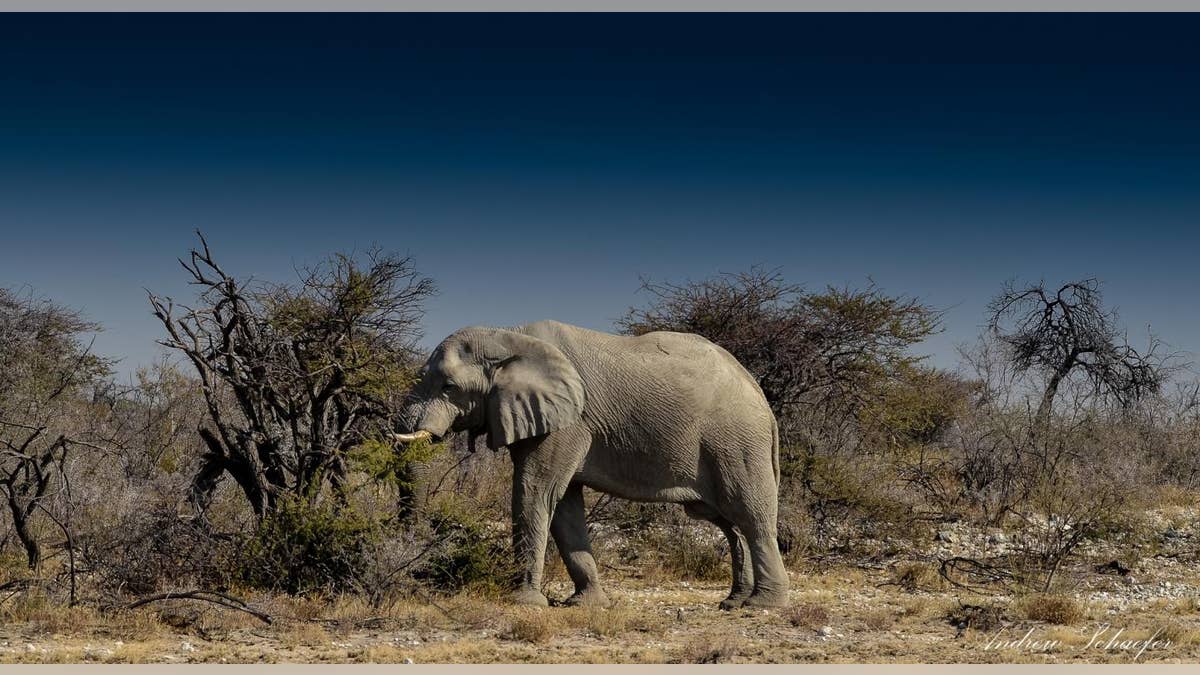
Elephant in Namibia. (Andrew Schaefer)
In Namibia, elephants that live in the desert have different behaviors than elephants that live in the savannas, but scientists have discovered through DNA analysis that the different elephant types are actually genetically similar.
Elephants that call the desert home have bigger ranges, and skills suited for the hot environment. For example, they can remember where food and water is, and also keep themselves cool by putting urine-wetted sand on themselves, according to the Carl R. Woese Institute for Genomic Biology at the University of Illinois. The desert elephants are also said to be bigger.
The scientists examined both nuclear DNA and mitochondrial DNA from the elephants, and determined that there weren’t significant genetic differences between the elephants that lived in the deserts and the savannas (although there was one regional exception). In other words, the desert elephants aren’t their own subspecies.
Related:
“The ability of species such as elephants to learn and change their behavior means that genetic changes are not critical for them to adapt to a new environment,” Alfred Roca, a professor of animal sciences at the University of Illinois said in a statement. “The behavioral changes can allow species to expand their range to novel marginal habitats that differ sharply from the core habitat.”
Even if they’re not different genetically, the scientists still call for the desert animals to be protected, especially because their rumored larger size makes them a target for hunters.
“Regardless, these elephants should be conserved,” Roca said in the statement. “Their knowledge of how to live in the desert is crucial to the survival of future generations of elephants in the arid habitat, and pressure from hunting and climate change may only increase in the coming decades.”
The study announcing the results was published in the journal Ecology and Evolution.
Follow Rob Verger on Twitter: @robverger




















